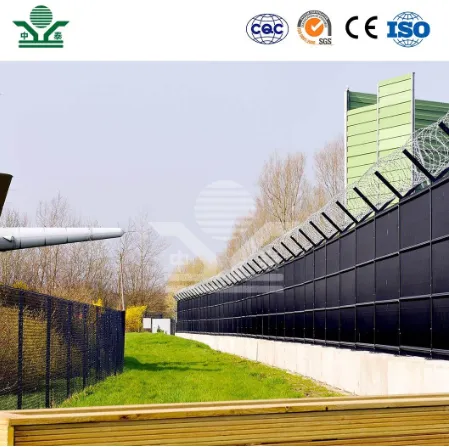The Importance of Site Fencing Ensuring Safety and Security
Site fencing is an essential component in the management of construction sites, industrial facilities, and various other types of land. In an age where safety and security have become paramount, the necessity of effective fencing cannot be overstated. This article explores the reasons why site fencing is crucial, the types available, and best practices for implementation.
Why is Site Fencing Important?
1. Safety for Workers and Visitors One of the primary functions of site fencing is to protect workers and visitors from potential hazards present on construction sites. Unfenced areas can expose individuals to dangerous machinery, deep excavations, and other risks. A well-erected fence not only keeps unauthorized personnel out but also serves as a reminder of the potential dangers within.
2. Security against Intrusion Construction sites can be targets for theft and vandalism, with valuable equipment and materials often left unattended. Site fencing acts as a deterrent to unauthorized access and can significantly reduce the incidence of theft. Robust fencing can help ensure that only authorized personnel gain entry, safeguarding the property and assets within.
3. Legal Compliance In many jurisdictions, safety regulations require the erection of fencing around construction sites. Complying with local laws not only avoids potential fines and legal repercussions but also demonstrates a commitment to maintaining high safety standards. Having proper site fencing in place can help a company uphold its reputation and responsibility towards worker safety.
4. Managing Site Boundaries Clear boundaries are essential for effective site management. Site fencing delineates the area where construction or industrial activities take place, preventing encroachment from neighboring properties and reducing the likelihood of disputes. It ensures that the project runs smoothly and within its designated limits.
Types of Site Fencing
1. Chain Link Fencing Widely used for its cost-effectiveness and versatility, chain link fencing is commonly seen around construction sites. It provides a clear visual barrier while allowing visibility within and outside the site. While it offers minimal security against determined intruders, it can be enhanced with barbed wire at the top for added protection.
site fencing

2. Hoarding Hoarding consists of solid panels that can be customized to display branding or project information. It provides a higher level of security than chain link fencing and is often used in urban settings where aesthetics are also a concern. Hoarding keeps the site hidden from public view, which can help address concerns related to dust, noise, and other disturbances.
3. Temporary Fencing Ideal for short-term projects, temporary fencing is easy to set up and dismantle. It can be made from various materials and is often used in event management, crowd control, and construction sites. While it may not offer the robustness of permanent fencing, it serves its purpose for quick setups and increased safety.
4. Security Fencing For high-risk sites, security fencing made from strong materials, such as steel palisade or welded mesh, may be necessary. This type of fencing is designed to withstand attempted breaches and is often fitted with security features such as alarms and surveillance cameras.
Best Practices for Site Fencing Implementation
1. Conduct Risk Assessments Prior to fencing installation, carrying out a thorough risk assessment will help identify potential hazards and determine the type of fencing needed to mitigate risks effectively.
2. Regular Inspections Once installed, regular inspections of the fencing should be conducted to ensure its integrity and effectiveness. This includes checking for damages, wear and tear, and ensuring that access points are secure.
3. Engage with Local Authorities Consulting local authorities before erecting fencing can ensure compliance with local laws and regulations. It may also provide insights into any additional requirements needed for safety.
4. Training and Awareness Workers should be educated about the purpose of the site fencing and how to maintain it. Promoting awareness can foster a culture of safety and security on the site.
In conclusion, site fencing is not merely a perimeter barrier; it is a critical aspect of site management that promotes safety, security, and compliance. By choosing the appropriate type of fencing and adhering to best practices, organizations can effectively protect their workers, property, and reputation, leading to successful project completion.
-
The Best Metal Mesh Solutions: Expanded Aluminum Metal vs. Expanded Stainless Steel Metal
NewsSep.10,2024
-
Round Perforated Sheets vs. Hexagonal Perforated Sheets vs. Embossed Perforated Sheet Metal
NewsSep.10,2024
-
Perforated Metal Sheets
NewsSep.10,2024
-
Experience The Excellence Of Stainless Steel Grating
NewsSep.10,2024
-
Discover the Versatility Of Metal Mesh Expanded Forming Machines
NewsSep.10,2024
-
Discover The Advantages Of Steel Grating For Sale
NewsSep.10,2024
Subscribe now!
Stay up to date with the latest on Fry Steeland industry news.

